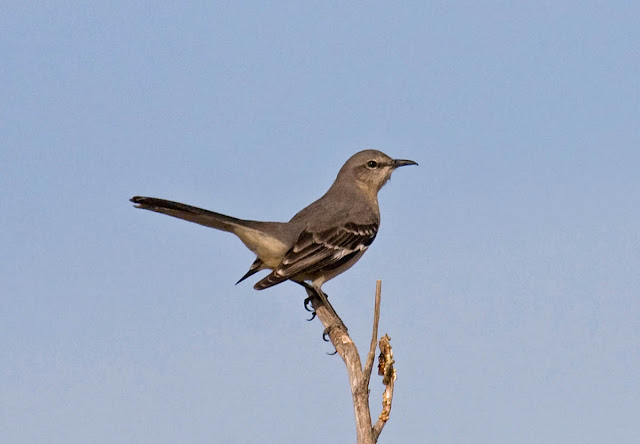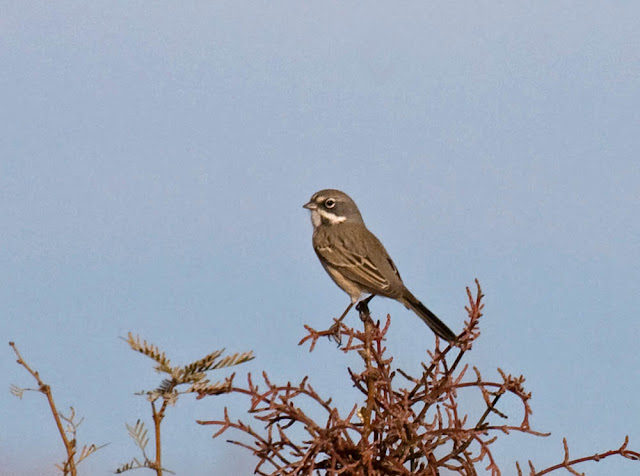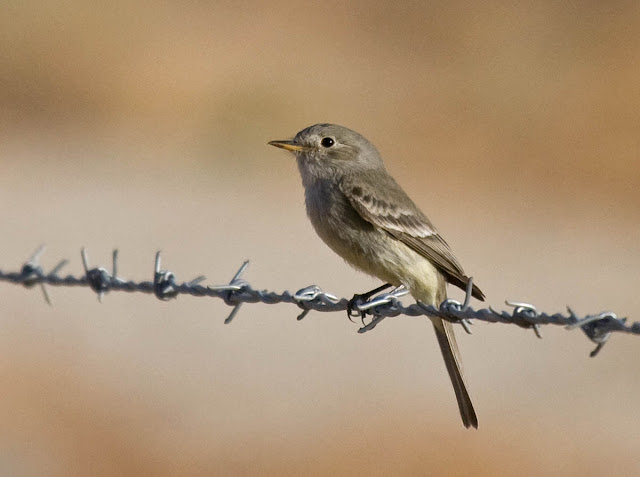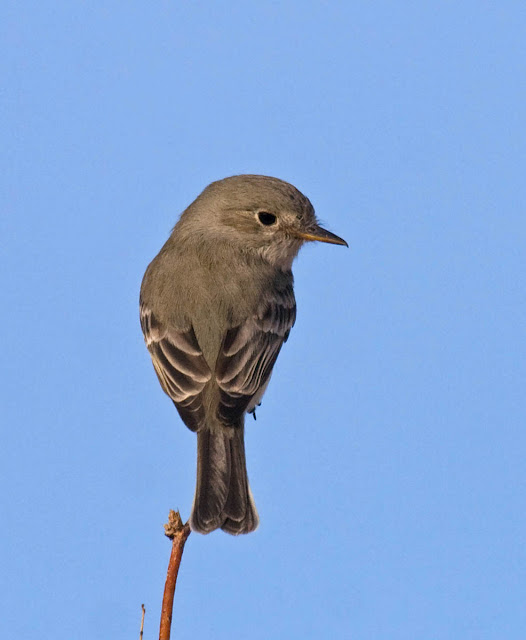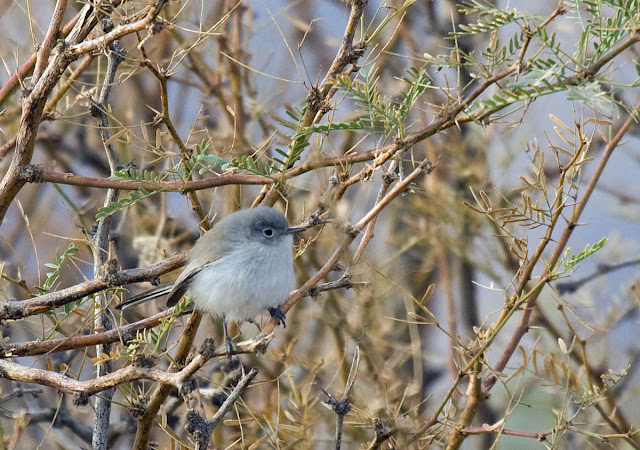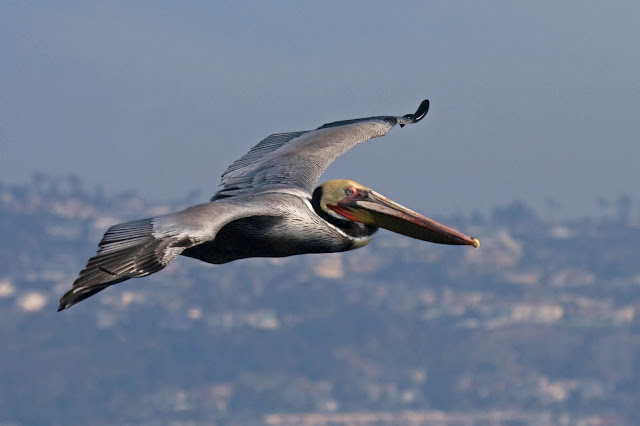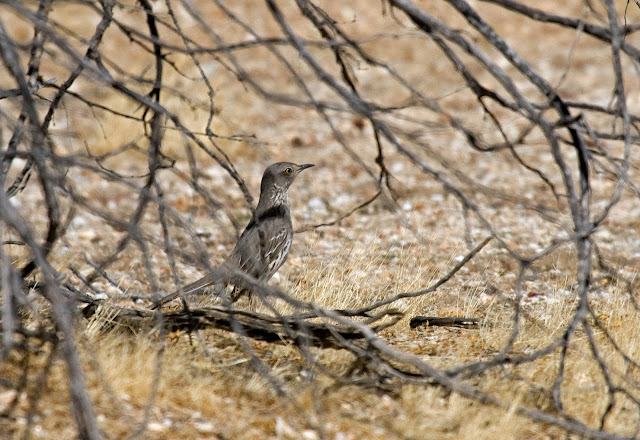I scored two points!
While birding in Borrego Springs recently, I remembered that I had previously entered some locations on my maps application to search for desert thrashers this spring for something called "Avicaching." Of course, I had forgotten most of the details. But I knew that birding surveys usually happen at dawn. So we were too late in the day to make an "official" survey. But why not check out the location in case we get another opportunity this spring? So Marlene and I headed south from Borrego Springs after lunch. We stopped at Yaqui Well where I walked in and found the two Long-eared Owls (no photos) that have been present this winter. Then we continued on to Scissors Crossing and headed south about 12 miles to Blair Valley.
We easily found the survey sites on two miles of sandy dirt roads that were no problem for our Kia Soul--two wheel drive but about 10 inches of clearance. We didn't have much time, so we only visited two of the three survey sites for less than a half hour each.
What is Avicaching? The details for this Desert Avicaching survey is
here. Basically, this is eBird + Geocaching. Survey sites in under-birded areas or habitats are set up as eBird Hotspots. Record birds here during the survey period (February 1 to June 15, 2018). Surveys should be 20-60 minutes and travel less than 1 mile to be valid.
Even though I wasn't there before 10:00 am, I noted that my eBird list was automatically entered into the Desert Avicaching Leaderboard. I scored two points!
 |
| Sage Thrasher. Blair Valley, California. March 18, 2018. |
Avicaching is fun! This particular project contributes to knowledge of birds in remote desert areas that may be impacted by solar farms. In this case, Sage Thrashers migrate through this area in large numbers. And who knows, perhaps Le Conte's Thrashers may be resident here. Further north, in San Bernardino County, breeding Bendire's Thrashers may be impacted. Other Avicaching points continue in the Mojave Desert to Death Valley and Las Vegas, Nevada.
Birdless. That's the first impression one has of Blair Valley survey points. The low spot on the valley is a dry lake bed. Last year spring rains brought a "Super-Bloom" to the desert. Very little moisture this winter, so just year-old dry grass in the lake bottom. At the edges, sparse well-spaced creosote bushes begin. Then some Gander's cholla and Mojave yucca (like smaller Joshua trees). That's the vegetation of one of the survey sites.
But scanning across the creosote I spy several solitary robin-like birds hopping on the ground--Sage Thrashers! And they are more common than one would think. After I entered 2 birds on the checklist the rarity flag in eBird popped up. I quickly reached 9 birds, and finally 12 birds after walking a couple hundred feet out and then returned to the car in a large loop around the survey point. That surpasses the total number of Sage Thrashers I've seen total in the Anza-Borrego desert the past 3 years!
Driving out past the camping area there were several Mourning Doves, a Verdin called, and several Black-throated Sparrows flitted about. There were certainly birds here, especially up next to the rocky hill, but it requires work to find them.
The second survey point was closer to the highway. There was more vegetation here. Some gravelly areas included cholla, barrel and hedgehog cacti, California juniper, and desert agave. As the gravel gave way to sand, it was again creosote, cholla, and Mojave yucca.
The gravel/cactus area seemed good for Black-throated Sparrows. But none revealed themselves. I walked a couple hundred feet without encountering any sign of any birds. I was really thinking I was going to submit a 20-minute checklist with no birds recorded! Then I heard a very distant raven. Looping around back to the car I heard the chugging of a far-off Cactus Wren. When I reached the car I heard the caroling melody of a singing Sage Thrasher back where I had been. Three species, three total individuals, none seen. Then two ravens flew up right over me!
First eBird
checklist.
Second eBird
checklist.
Even though birds were sparse, I enjoyed visiting a new area for me and contributing to the knowledge of birds in a very under-birded location. I hope to get out there again a time or two this spring. I would really enjoy it if there were more avicaching projects to participate in. Perhaps it could be done as a follow-up to the bird atlas project that was done about 20 years ago in San Diego County. I know I really enjoyed the Oregon Breeding Bird Atlas project done about the same time. Fun!








